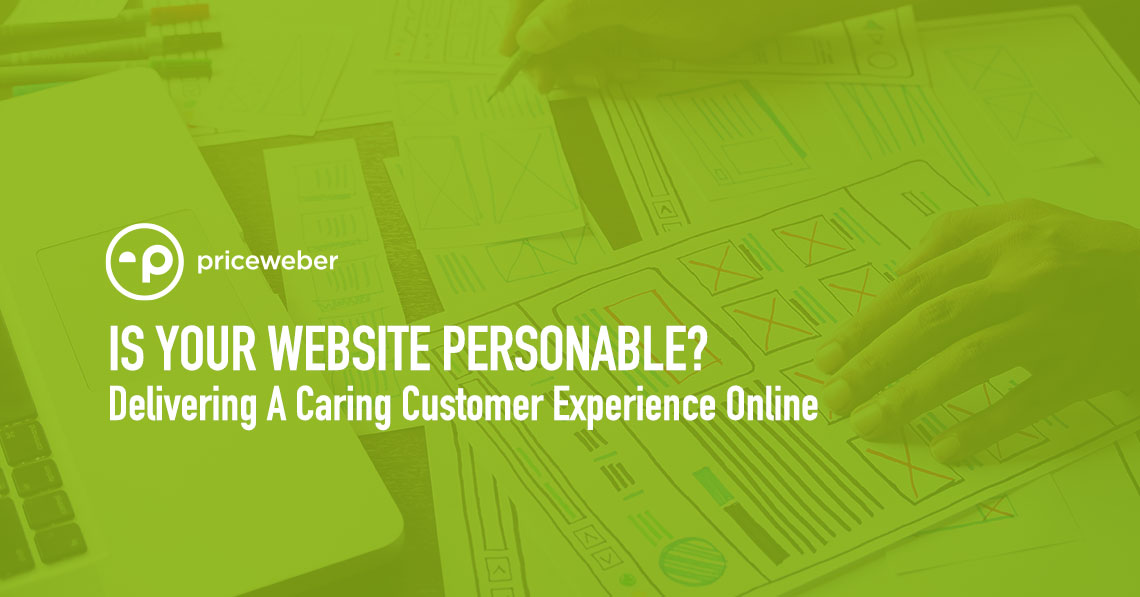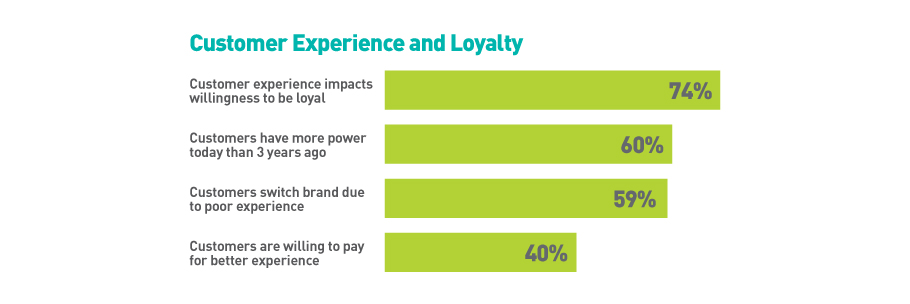In 2021, it’s safe to say that a big chunk of our days are spent online, whether thumbing through social media, shopping, researching a project or big purchase, or gathering information about current events. Of those daily website visits, how many of them stand out to you as being really great, personal experiences? In this edition of Plain Talk, we’ll walk through some of the business-critical reasons you should be delivering a personable website experience.
Breaking Through
So you have a website. That’s a good start. But there are over 400 million active websites out there, so it’s important to take the time to make sure your site and content break through that clutter and leave a great impression of your brand. The kind of impression that leads to a sale.
To us, that is the first fundamental question we ask our clients and ourselves when developing a new website – how do we want the user to interact with the content, and how can we make their experience better?
UX To CX
To answer that question, we have to take a step back and first contemplate the intended User Experience (UX) and Customer Experience (CX). Simply put, UX is the collection of practical actions you need your website user to be able to find and do. These include things like finding information, making purchases or completing tasks. Essentially being able to DO the things for which the site was built. Then there is CX, the “squishier” of the two experiences. While UX is kind of binary, CX is more about the feeling that your website leaves the user with. Do they feel served? Do they feel satisfied by the experience? Was it the kind of experience they would recommend to a friend with confidence? And while a business’s CX extends beyond the web, it is the web CX (UX, ease of purchasing, customer service or complaints, chat, etc.) and the degree to which that experience feels personalized that is often the most visible or memorable to customers for better or for worse.
In a recent survey conducted by Oracle , senior executives were asked how a customer’s overall experience with a company online translated into their buying behavior and brand loyalty. Of the results, the main statistic that stuck out was that 49% of buyers were compelled to make impulse purchases or buying decisions based on receiving a personalized customer experience.
Content (Strategy) Is King
In order to create that personalized experience online, you have to start with a sound, thoughtful content strategy. That strategy takes into account how all of the content displayed on your site works together to tell a story all while informing and leading your customer down the path to feeling comfortable enough to make contact – whether that be submitting a contact form inquiring about services or requesting more information or making a purchase.
Here are some items to consider when organizing or writing content for your website.
1. Know Your Audience
-
- Understand who they are and where they are coming from.
- Understand the mindset they may be in when using your site and strive to create an emotional connection. For example, if they are visiting a healthcare site, they may be in distress or in desperate need of help for a loved one, so connecting on that emotional level and letting them know you understand their position compassionately will resonate with them.
- Understand what they need from your company and make that information readily available. Users do not want to do a lot of work to understand your brand’s value.
- Put yourself in their shoes and envision how they will be using your site. This will help create a content structure that ties everything together in an easy-to-use way.
2. Users Want Clarity and Simplicity
-
- Convey your message and create a simple path for users to reach out. Don’t create too many steps in order to contact you; create a path of least resistance for your users.
3. Remember: Websites Are Scanned, Not Read
-
- Keep your messaging simple and easy to digest. If you’re explaining technical information, work to make it as easy to understand as possible.
Once your content is decided upon and structured in a useful way, the focus shifts to how to communicate your message and display your content through design. Sometimes how your message is displayed is more important or impactful than what you are actually saying.
When designing, here are some tips to keep in mind.
Key Elements in an Impactful Website Design
1. Simplicity
Don’t overcomplicate things with too many pictures or graphics; those are important but adding too many can take away from your overall goal and overwhelm your potential customers.
2. Don’t Be Afraid of White Space
I know. This goes against a lot of design rules, but with so much content, the use of white space can provide balance on the page and leave the user feeling at peace and able to successfully comprehend your content.
3. Segment Key Information
Group related content together, such as key services, benefits, important details about the brand, etc. Grouping related content makes information easier to understand.
4. Use Relatable Imagery
By using images or themes that relate to your brand or content, it allows the user to picture themselves using your products or services, therefore helping them visualize how your services or products can be useful in their lives.
5. Use Colors Strategically
When selecting color themes to use throughout your site, it’s important to take into consideration the type of content, while incorporating your brand colors, of course. If you are dealing with high-stress content, such as home healthcare, incorporating warm, more muted colors can help calm users.
6. Maintain Consistency Throughout
Whether your website has four pages or 76, it’s important to make sure that your brand voice, tone, and goal are consistent throughout the site.
Ready to Rethink Your Site?
While building a high-performing site with first-rate CX may seem a little daunting, rebuilding a site with your focus squarely on the intent and need of the customer is not as overwhelming as it may seem. If you have questions about this or any other aspect of building a successful website, please give us a call at 502-499-4209 or drop us a note here, and we’ll get you in touch with the right people.
About the Author
Michelle Stevens is the PriceWeber healthcare practice lead and digital experience expert. Michelle works to create high-touch, high-empathy websites and media campaigns that deliver on the expectations patients and families have of their healthcare providers.



